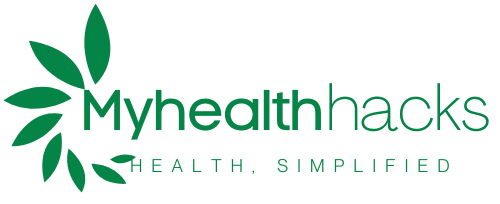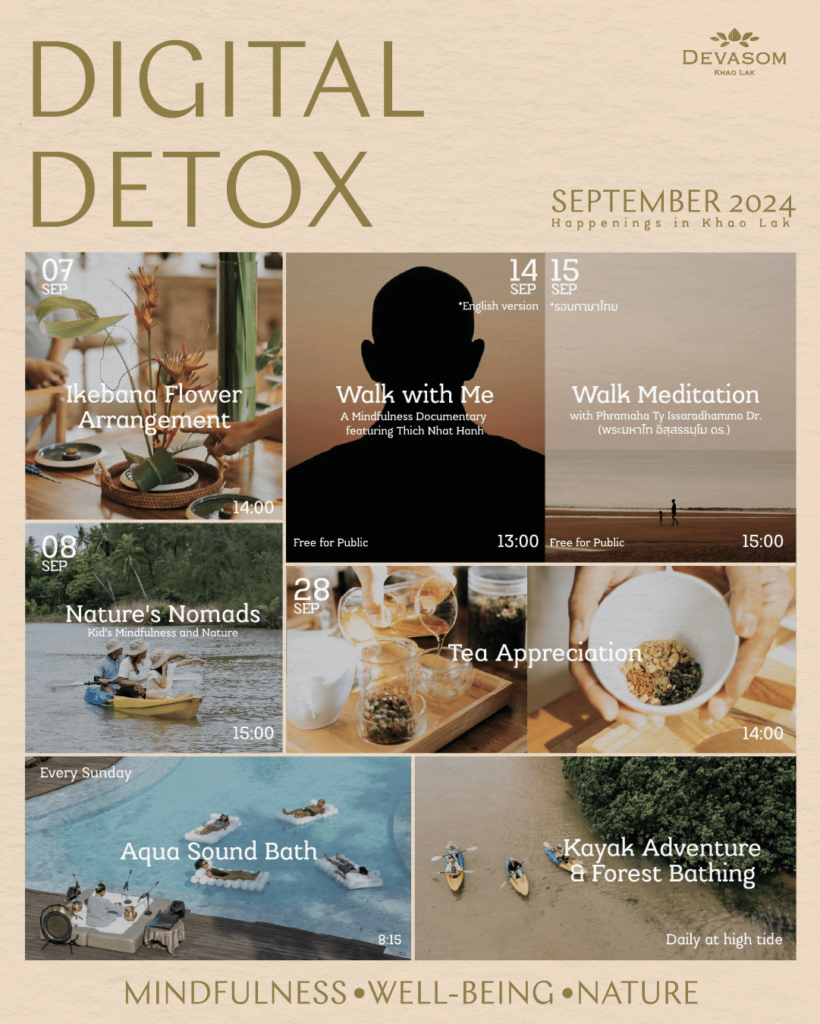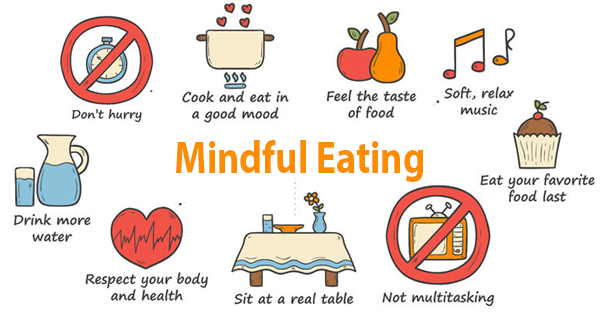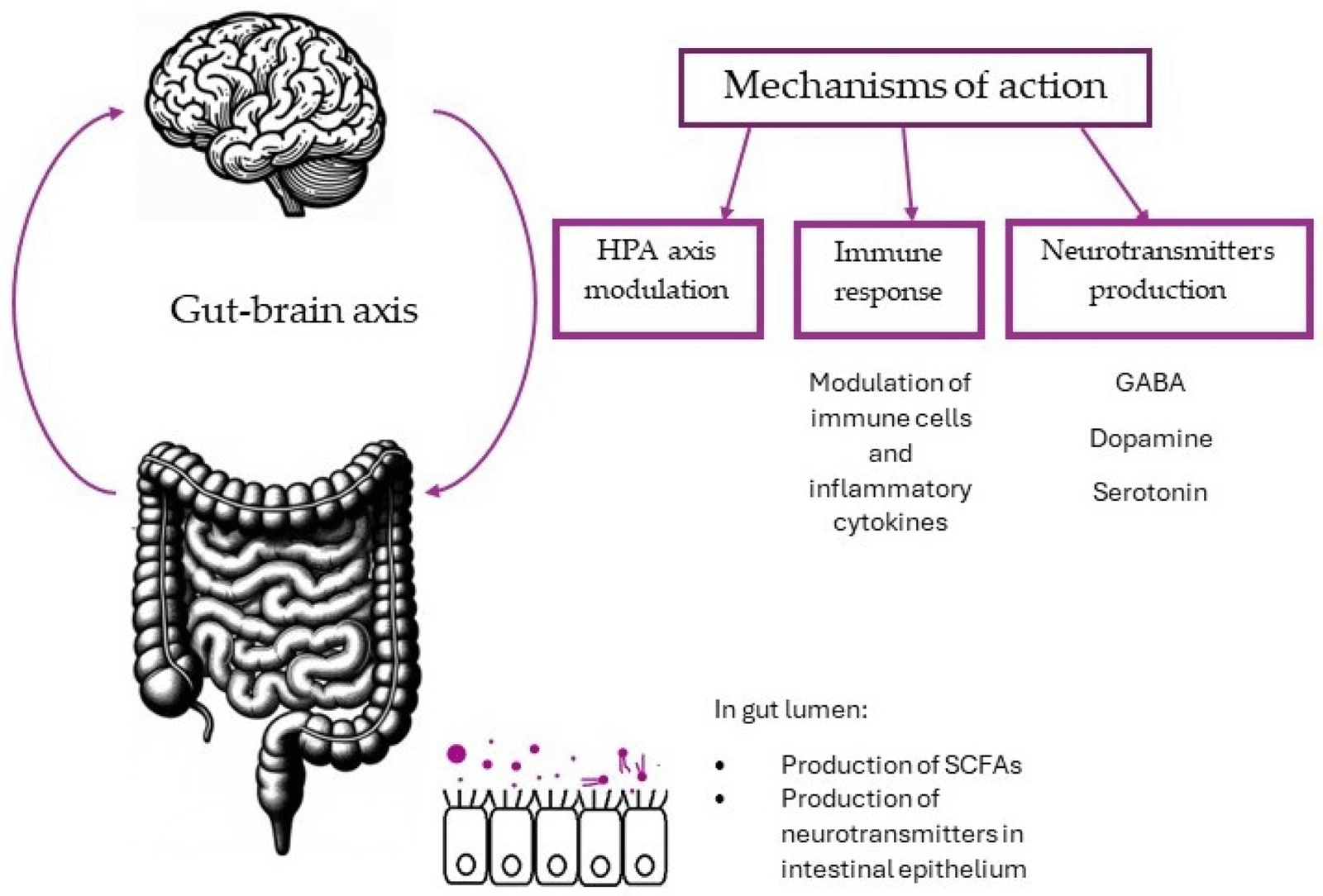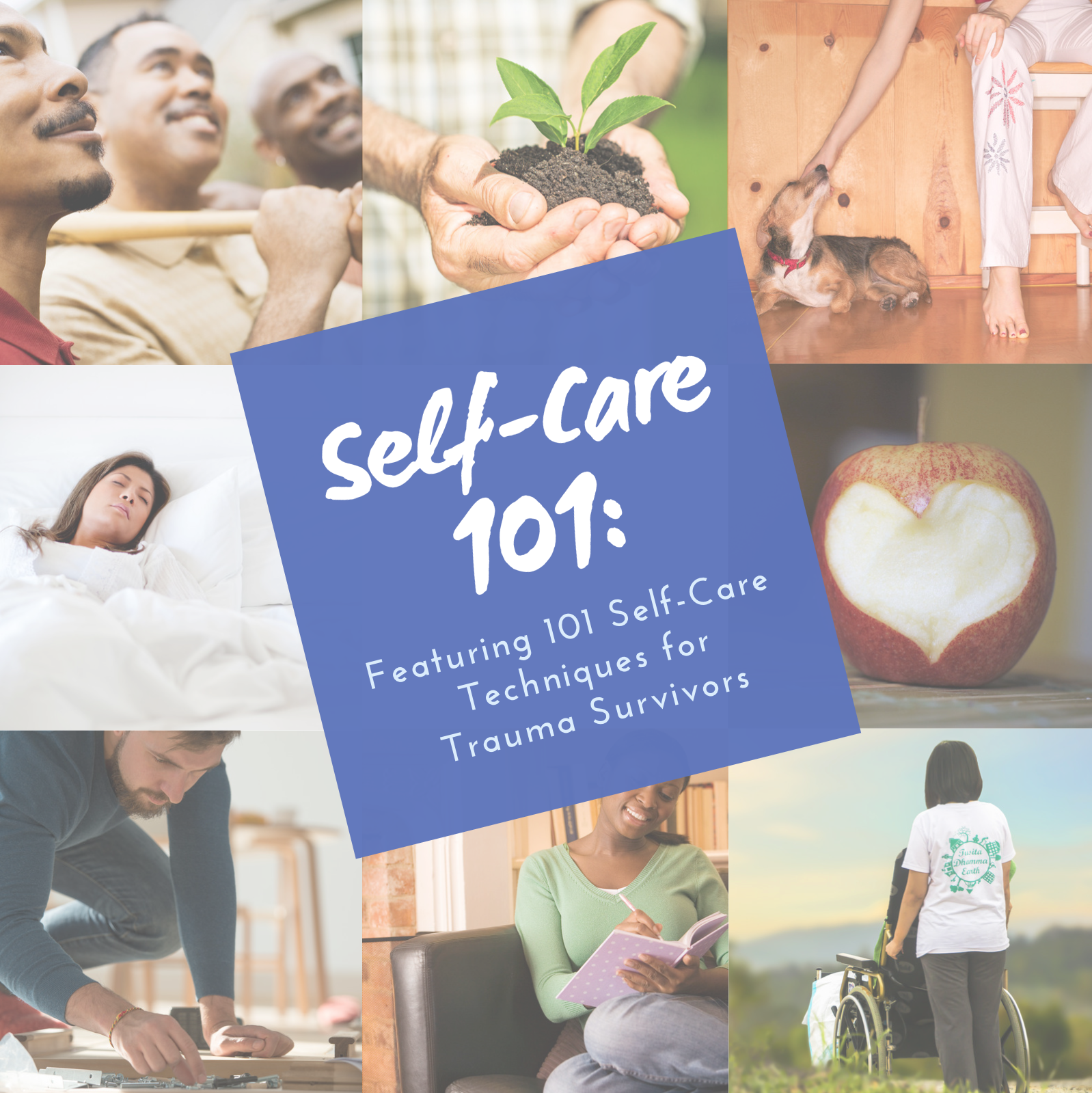In 2025, the debate between digital detox (unplugging from devices) and digital mindfulness (using technology intentionally) is more relevant than ever. This article explores their differences, benefits, challenges, and real-life applications. Packed with evidence, examples, and practical advice, it helps you decide which approach—or combination—works best for your lifestyle in today’s hyperconnected world.
Why This Debate Matters in 2025
We live in an era where digital devices are an inseparable part of our work, learning, and social lives. From AI assistants and immersive social media to augmented reality and smart homes, being “always on” is the new normal.
But as connectivity grows, so does digital fatigue. People increasingly ask:
- Should we disconnect entirely for better mental health?
- Or should we stay connected mindfully, cultivating awareness and balance?
This tension has fueled two wellness movements: digital detox and digital mindfulness. In this comprehensive guide, we’ll break down both concepts, their effectiveness, and how you can use them to improve well-being, productivity, and balance in 2025.
What Is Digital Detox?
A digital detox means intentionally taking a break from digital devices—phones, laptops, tablets, or social media—for a set period.
Common Digital Detox Practices:
- Weekend without screens
- Daily “no-phone” windows (e.g., first hour after waking, last hour before bed)
- Device-free vacations or retreats
Benefits Reported:
- Reduced stress and anxiety
- Improved focus and productivity
- Better sleep quality
- Stronger in-person connections
Example: A 2025 systematic review found that short-term detox interventions can boost mood, creativity, and social interaction while reducing compulsive phone use.
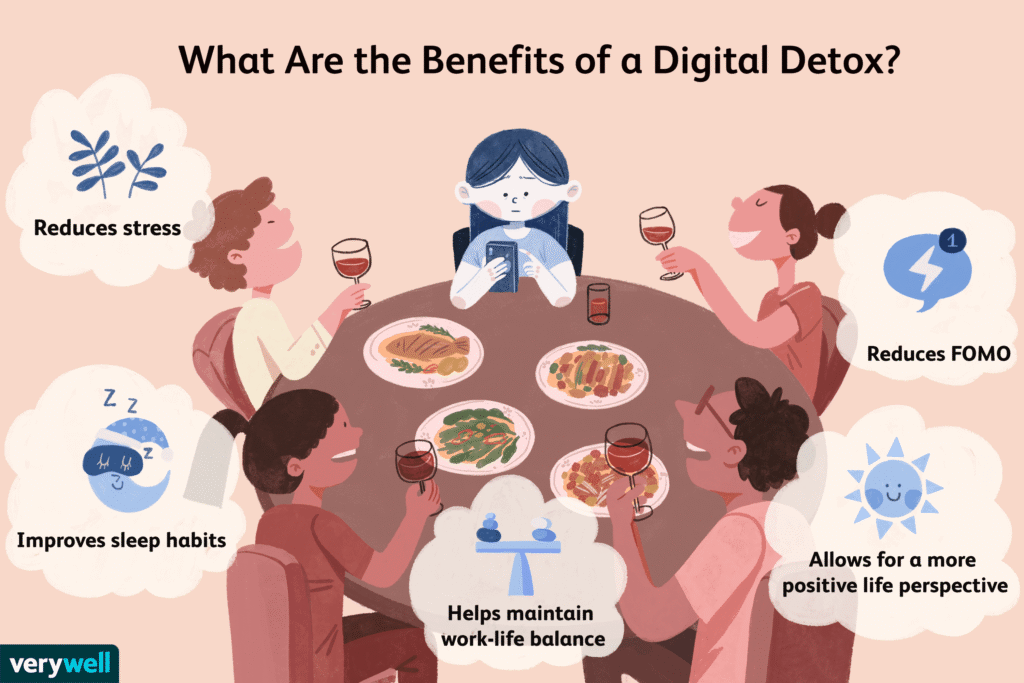
What Is Digital Mindfulness?
Digital mindfulness is not about abstaining—it’s about how we use technology. It means approaching devices with awareness, presence, and intention.
Principles of Digital Mindfulness:
- Intentionality: Define why you open an app before you do it.
- Mindful Checking: Pause before scrolling and ask, “Am I here for value or out of habit?”
- Boundaries: Limit notifications and create “silent hours.”
- Scheduled Use: Set fixed times for emails or social media.
- Reflection: Regularly review how technology makes you feel.
Example: Many users in 2025 employ apps like Headspace or Calm to stay mindful, paradoxically using technology itself to regulate their digital behavior.
Digital Detox vs. Digital Mindfulness: Side-by-Side Comparison
| Aspect | Digital Detox | Digital Mindfulness |
|---|---|---|
| Core Idea | Complete break | Conscious, intentional use |
| Duration | Short bursts or retreats | Ongoing daily practice |
| Best For | Resetting, burnout recovery | Long-term sustainable change |
| Risks | FOMO, withdrawal anxiety | Requires constant self-awareness |
| Sustainability | Hard to maintain full-time | More adaptable |
| Tech Use | Minimal to zero | Selective and intentional |
| Evidence | Strong short-term gains | Promising for long-term habits |
Takeaway: A hybrid approach—detox resets + mindfulness maintenance—works best for most people in 2025.
What Does Science Say in 2025?
Research Highlights
- Mental Health Gains
- Detox interventions reduce depression symptoms significantly (NCBI).
- Productivity & Focus
- Short detoxes help restore attention and creativity.
- Mixed Outcomes
- Some studies show little effect on life satisfaction, proving detox is not a cure-all.
- Rebound Effect
- Without follow-up habits, many users slip back into old patterns.
- Mindfulness Potential
- Digital mindfulness offers ongoing benefits like emotional regulation and healthier relationships with technology.
Bottom line: Detox offers quick relief; mindfulness sustains balance long-term.
Real-Life Stories (2025)
1. The CEO Reset
A startup CEO tried a full weekend detox but panicked when operations piled up. She now practices digital mindfulness—batching emails, silencing notifications at night, and taking mindful breaks. The result: better leadership clarity without sacrificing availability.
2. The Writer’s Retreat
An author booked a 5-day digital detox retreat. He rediscovered his creativity but slipped back into heavy device use afterward. His solution: weekend detoxes + weekday mindfulness.
3. The Remote Worker
A freelancer couldn’t afford full detox. She adopted mindful micro-breaks (5 minutes every 90 minutes screen-free). Over time, she noticed fewer afternoon slumps and sharper focus.
4. The Gen Z Minimalist
In 2025, many Gen Zers are switching to flip phones during weekends. This hybrid approach helps them enjoy life offline while keeping essential digital functions available.
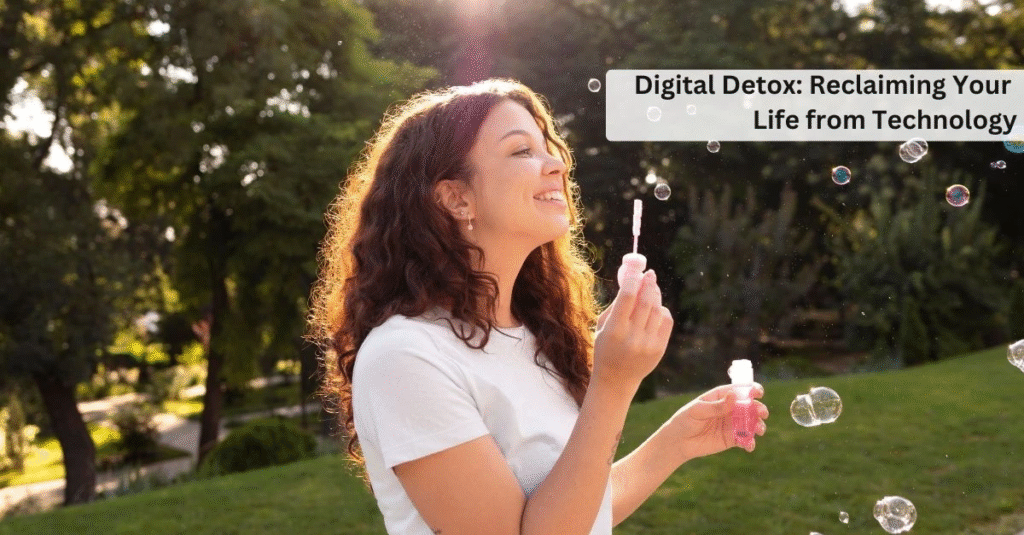
When to Choose Detox vs. Mindfulness
Go for Digital Detox if:
- You feel burned out or anxious from tech overload.
- You want a strong “reset button.”
- You’re entering a creative or wellness retreat.
- You can disconnect without jeopardizing work/family needs.
Go for Digital Mindfulness if:
- You must stay connected for work or caregiving.
- You prefer sustainable, flexible habits.
- You dislike rigid “all-or-nothing” rules.
Best Practice: Combine Both
- Short detoxes: weekends or daily device-free hours.
- Mindful use: intentional, boundary-driven digital routines.
- Quarterly resets: deep detoxes to recalibrate.
How to Apply Each Strategy
Planning a Digital Detox
- Pick duration: 24 hours, weekend, or retreat.
- Notify key contacts in advance.
- Prepare analog alternatives (books, journals, alarm clocks).
- Designate device-free zones (bedroom, dining table).
Executing a Detox
- Switch devices to airplane mode or lock apps.
- Replace scrolling with low-stimulus activities (nature walks, journaling).
- Reflect on emotions like boredom or FOMO.
Practicing Digital Mindfulness
- Set clear intentions before opening apps.
- Use scheduled check-ins for email/social media.
- Silence notifications during focused work.
- Track your emotional state after screen sessions.
- Use apps like Forest, Freedom, or PauseNow to support mindful habits.
10 Frequently Asked Questions (FAQs)
1. Can a digital detox permanently fix my smartphone addiction?
Not alone. Detox can create a reset, reduce cravings, and improve mood, but sustaining that requires deeper habit change. Studies show rebound effects are common without ongoing intention and structure. redfame.com+1
Rather, use detox as a launchpad to adopt digital mindfulness, habit design, and self-awareness strategies.
2. How long should a digital detox be for real benefits?
Even 24–48 hours of reduced digital exposure have been shown to yield measurable mood, concentration, and clarity gains.
However, deeper shifts usually require 3-day to week-long resets plus mindful follow-through.
3. Will a digital detox harm my work/productivity?
During the detox itself, some tasks may slow. But paradoxically, many people report a productivity boost after the detox, thanks to restored focus and clarity. Use careful planning (offline fallback, alerts for emergencies) to mitigate disruption.
4. Is digital mindfulness “just another productivity hack”?
No — at its core, digital mindfulness is about mental sovereignty, awareness, and values, not just efficiency. It encourages reflection on why we use tech, not just how fast.
5. Can I combine detox and mindfulness?
Yes—and often that synergy works best. Use detox for resets, then embed mindful habits moving forward. Many seasoned practitioners do periodic detox rituals within their broader mindful practice.
6. What if I feel anxious or bored during detox?
That’s expected. Your brain is used to constant stimuli. Use grounding practices (breathing, walking, journaling), and treat the discomfort as data—not failure.
7. Are there risks to detoxing too hard?
Yes. You may feel guilt, FOMO, social isolation, or resistance. Overly rigid rules can backfire, making tech use psychologically loaded. Start small.
8. Do kids and teens benefit from detox or mindfulness?
Both. For younger ones, structured digital “fasts” (e.g., screen-free weekends) can reset habits. But teaching digital mindfulness (intentional use, reflection) is arguably more sustainable long term—especially as screens become integral in learning.
9. Which approach is better for mental health?
Detox is more likely to deliver immediate relief, especially for stress or mood overload. Mindfulness may yield stronger long-term benefits in emotional regulation, resilience, and balanced tech use. The best answer: start with detox, grow into mindfulness.
Final Thoughts
In 2025, you don’t need to choose between digital detox and digital mindfulness as an either/or. The smartest path is intentional hybridity:
- Use detox for resets.
- Use mindfulness for sustainable, everyday balance.
That way, you stay human—even in a hyper-digital world.
